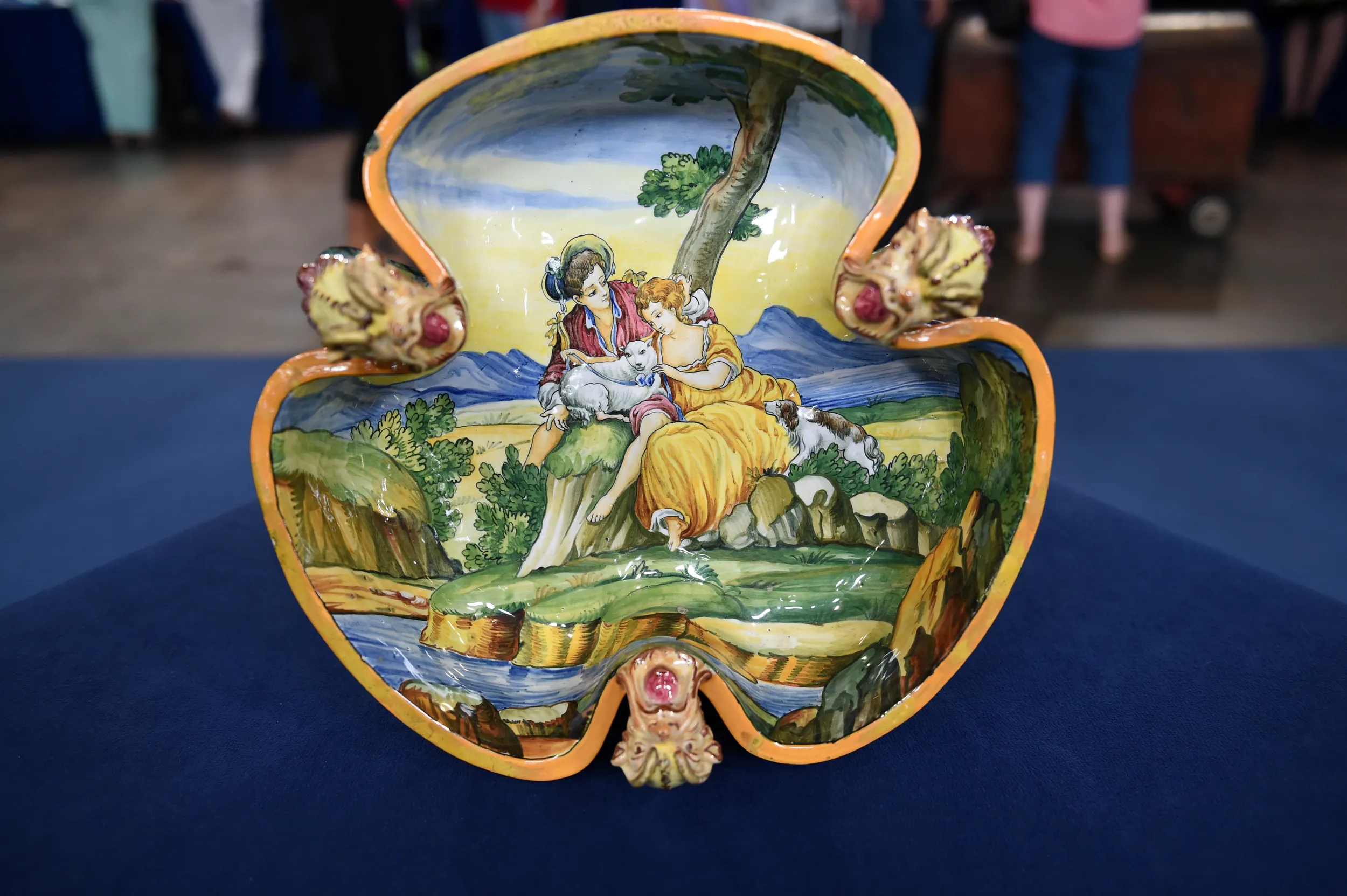GUEST: Well, it belonged to my mother.
APPRAISER: Do you display it? Do you keep it out?
GUEST: Not quite as much as my mother did. She displayed it in her house a little more formally. She was an antique collector. So I think this caught her eye and she displayed it in her living room.
APPRAISER: And what do you think about it?
GUEST: Well, to be quite frank about it, I hadn't thought too much about it. We've admired it over the years off and on, and wondered about it. It's quite ornate, almost gaudy in a sense. But at the same time, it struck us as somewhat mysterious, and we wanted to learn more about it.
APPRAISER: Well, this is why you come to ANTIQUES ROADSHOW.
GUEST: Absolutely.
APPRAISER: Well, let's find out a little more about it. I'm going to tip it forward so we can see inside it. It's painted on the inside in a very, what you might say, conventional manner. Conventional certainly to Italian pottery painting, what we call maiolica painting, which is a tradition that goes back to the 16th and 17th centuries. And it's painted very much in the old-fashioned way. The whole thing is hand-painted. And then the outside, the exterior of the bowl is very rich and colorful, less, really, in an Italian way, than it is in a, what we might call Victorian majolica colors. So what we're seeing is an unusual combination of maiolica and majolica. And I thought I'd use this piece to try and explain the two, really. Maiolica is a term for earthenware that's been given a tin glaze, a white glaze, which you really can't see anymore because it's all been painted over. The white glaze forms a kind of canvas. And majolica is the name for these rich colored glazes, including this rich cobalt blue and green and sort of lustrous glazes popular in the second half of the 19th century. So you've got an unusual combination here. Gaudy is certainly one way you could describe it. It's very colorful, it's very rich in ornament. It's also very well-made. The quality of everything here is very high. So you can see that it's made by a company that knew what they were doing. I'm going to turn it over and we'll look at the mark here. Not all Italian maiolica has a mark, but here's one. It says clearly, "Made in Italy," which kind of means it was, one, made in Italy, and secondly, that it was really made for export. Above the pattern number is a little mark with a shield and a kind of inverted V, and that's the mark of Fantechi, very high-quality ware. This one, I think by the quality of it, we can date to about 1930 to '35, something like that. One of the things I like about it, especially, is the shape. This is what we call a trefoil with these three foils, like a cloverleaf, if you like. Is a classic, early Middle Ages form that just works so well here. We would call this just a centerpiece bowl. It's not really designed to be anything else. We have to remember it's from 1930 or so. It's not, strictly speaking, an antique or an authentic piece. It's really a reproduction, and very few reproductions have any great value. The value here is what we call decorative value. And I think if this were placed in an antique shop in the right setting, you could certainly put a price on it of at least $1,500. So to me, that's the right sort of retail price. $1,500.
GUEST: Okay.





